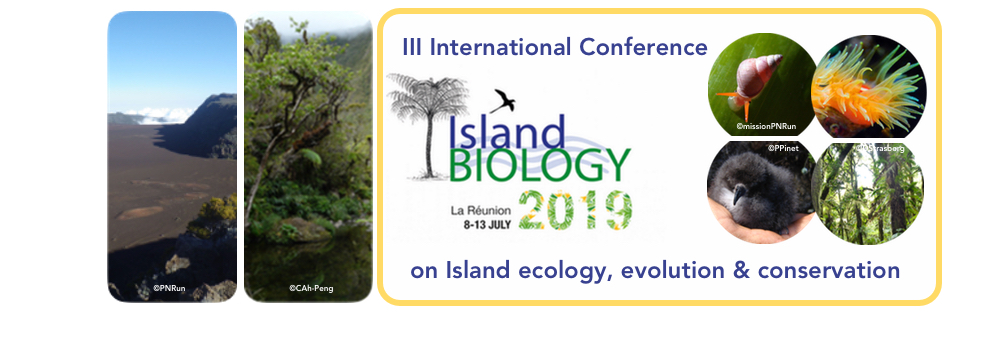The concept of spatial footprint is classically used to describe the geographical impact of a natural event on landscape. From the perspective of remote-sensing, this footprint can be assessed by implementing methodologies to detect changes in the spectral signature of a pixel or an object contained in multiple dates or time-series images. Since the 2000s, various phenomena such as forest fires, hurricanes, floodings or coral bleaching have been monitored using change detection approaches throughout the western indian ocean, including La Réunion. The methodologies and results of these studies are presented here highlighting their contribution in the assessment of impacts on insular territories. On the basis of results obtained locally and regionally (projects RENOV-RISK Impact, TAIMPO, Becoming,...), we introduce the fundamentals and future opportunities of such methods in the context of Big Data (large volume of data, at high temporal and spatial resolutions) with national and international programs such as THEIA, GEOSUD, Kalideos or Copernicus. These programs favor the free distribution of earth observation data, products and methodologies from high-resolution optical and SAR sensors (Landsat, Sentinel 1 and 2...). We will evidence (i) the importance of developing generic preprocessing chains and producing standardized products, regardless of acquisition specifications, to be used for temporal analysis dedicated to landscape evolution monitoring, in various geographical contexts, and for a large range of thematic applications, (ii) the interest of building generic change detection toolboxes through the production of simple standardized products (NDVI, NDWI, IB on optical data and normalized difference on SAR), to widen the applications based on earth observation data and make such technologies available to larger user communities.

|
|
|
|
Spatial footprint of natural disasters: opportunities and challenges for remote sensing in the south-western Indian Ocean
1 : ESPACE-DEV, UMR228 IRD/UM/UR/UG/UA, Université de La Réunion
Université de la Réunion
Station SEAS-OI, 40 avenue de Soweto, 97410 Saint-Pierre, La Réunion, France -
France
2 : ESPACE-DEV, UMR228 IRD/UM/UR/UG/UA, IRD
-
Website
Institut de Recherche pour le Développement, Université de Perpignan Via Domitia, Université de la Réunion, Université de Montpellier, Université de Guyane, Université des Antilles (Pôle Martinique), Université des Antilles (Pôle Guadeloupe)
IRD - Maison de la Télédétection - 500 rue Jean-François Breton - 34093 Montpellier -
France
3 : ESPACE-DEV, UMR228 IRD/UM/UR/UG/UA, IRD
Institut de Recherche pour le Développement
Station SEAS-OI, 40 avenue de Soweto, 97410 Saint-Pierre, La Réunion, France -
France
4 : Institut et Observatoire Géophysique d'Antananarivo
(IOGA)
Arabe Jeneraly Charles de Gaulle, Antananarivo, Madagascar -
Madagascar
5 : ESPACE-DEV, UMR228 IRD/UM/UR/UG/UA, Université de La Réunion
* : Corresponding author
Institut de Recherche pour le Développement
15 Avenue René Cassin, Sainte-Clotilde 97715, France -
France
|
| Online user: 34 | RSS Feed |

|
 PDF version
PDF version